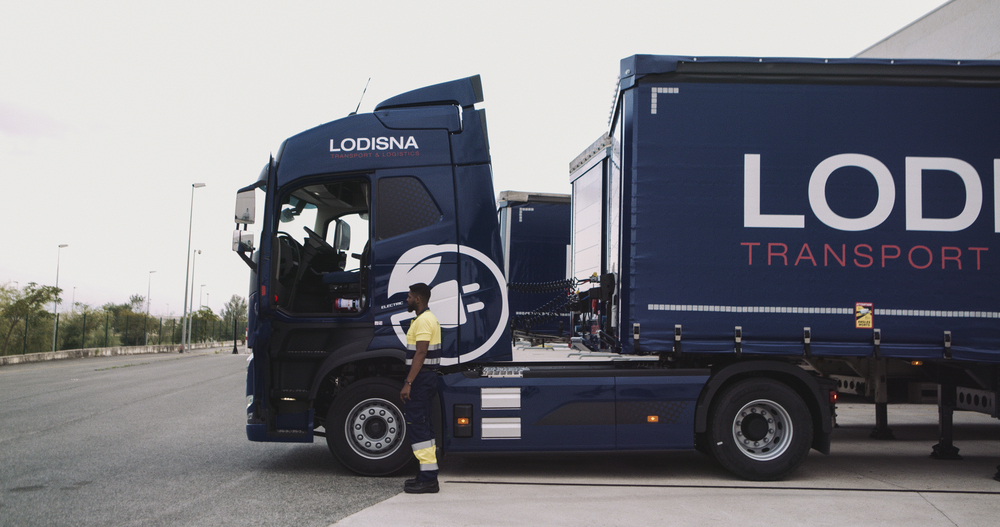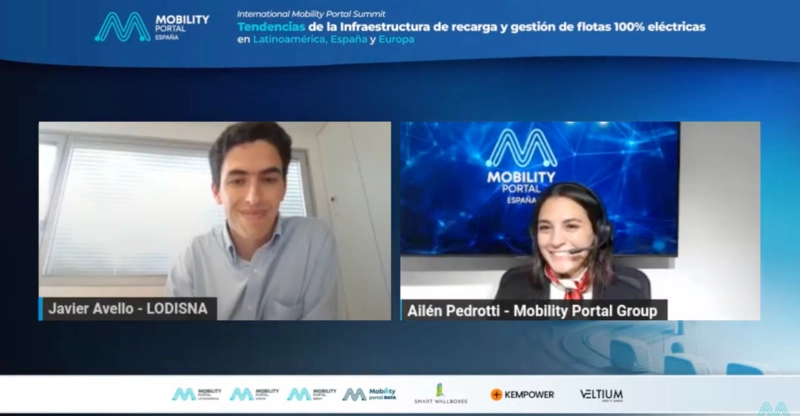Is on-road recharging of electric trucks possible on Spain’s highways currently?
“Right now, with the charging points we have and their power, it is not viable, but in a short time it will be,” says Javier Avello, Project Manager in Lodisna, to Mobility Portal España.
So, what are the keys to making it possible in the end?
First of all, the sector specialist emphasizes the possibility of “refueling” quickly, to address a factor that influences the heavy transport sector, which is the driver’s tachograph time.
Currently, this period is 15 minutes, but fueling a vehicle that travels 300 kilometers with a power of 350 kilowatts (kW) takes approximately between an hour and an hour and a half.
At this point, a second problem arises that is closely related to the time it takes for a charger to be operational.

According to what is said in the sector, charging point operators (CPOs) are doing what is necessary to promote this deployment, but they encounter challenges when receiving station authorization.
This is mainly linked to the absence of an updated and public map of the electrical network, which leads CPOs to depend on energy distributors when receiving the requested power.
In many cases, they do not get the energy they want due to a lack of capacity in specific locations.
“We observed that there are numerous high-power charging points installed, but the necessary permits are still pending,” says Avello.
And he emphasizes: “Once they have access to the network, we will be able to implement operations of these characteristics immediately.”
What is the daily roadmap that Lodisna must face?
Every day, the comprehensive logistics and international transport company Express covers 540 kilometers (km) with its electric trucks between Madrid and Zaragoza, round trip.
This route is carried out by a Volvo FH Electric, which has a range of up to 300 km, allowing the journey to be covered with one stop for recharging on the return leg, as consumption is higher due to the terrain.
So, “the question is whether this can be scaled up and currently, no, due to the number of chargers available on that route,” which represents the third key factor for achieving a 100 per cent eTruck network.
But it can be materialized once the necessary conditions are met in terms of characteristics and dimensions of the infrastructure required by a heavy-duty vehicle.
Not only that.
The fourth point that Avello mentions is the responsibility of administrations to provide financial assistance, but fundamentally, to facilitate deployment “at a bureaucratic level.”
As well as promoting its drive from the business sphere.
In this regard, he asserts that companies play a crucial role in leading the development and creation of opportunities that are viable from a commercial perspective and attractive for investment.
“If you want to install high-power chargers in a specific corridor, it will always be safer if there is a constant flow of trucks that will use that infrastructure,” he explains.

What is Lodisna’s strategy regarding electrification?
The company is currently carrying out various projects to electrify medium-distance routes with vehicles weighing over 16 tons, to transport around 12 units.
As well as, in turn, developing a procedure that helps them generate enough trust in the client to be able to take the step to zero-emission mobility.
In what way?
By designing a project methodology that includes a theoretical analysis phase of the routes the user wishes to take.
Subsequently, Lodisna conducts a road test with a demo truck, with which it carries out a real test of the routes and recharges, considering all relevant factors.
With all the information gathered during these tests, they prepare a detailed report which they present to the client to strengthen confidence in using electric vehicles for the transport of their goods.
“In general, any change raises doubts, but we must take a positive approach and address the issue with enthusiasm and optimism to continue driving forward this challenge in which we are immersed,” highlights Javier Avello.
Relive the “International Mobility Portal Summit: Trends in charging infrastructure and management of 100% electric fleets“:








